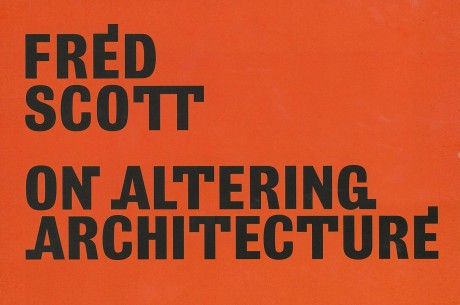On Altering Architecture
5 May 2016 5:30 pm at SAUL Studio
Speaker: Fred Scott
I was drawn to teach on the interiors course at Kingston in the 1980s, and so to leave architectural teaching, because of my allegiance to art schools, and also because Julian Powell Tuck was teaching there at the time, and we have been fellow travellers in the maze of alteration since he was a student at the RCA. Early on at Kingston he coined the central question of interior or interventional design, which is the question of what degree of alteration – spatial, material and surface – is legitimate. Such questions of course have no meaning without a theoretical basis, so we slowly discerned that one must try to discover a sequence of cogent arguments towards a theory of intervention, so as to answer our original feelings, which had up ’til then lain somewhere between convictions and suspicions.
The book is an attempted taxonomy of interventional design, a description and to an extent a classification of the issues and approaches relevant to the work, as a specialism within Architecture itself, just as the making of new buildings might also be considered.
As I came to understand it, intervention had tended to be a broken-backed activity: work on an existing building, to make good and to prepare it for a new intervention, was seen commonly as merely preparatory, and as such exempt from accusation, one way or the other; the purpose and outcome of this approach was to highlight the singularity of the new design. My counter argument is that the designers’ attitudes to the host building are a central component of their work, and because of this, the structured understanding of the context for the work is essential.
The question of empathy between the new and the existing then becomes paramount. The work of alteration can be thought of as translating a building from the past into the future. In illustrating this the book draws parallels with similar activities in other fields, with translation in poetry, transcription in painting and with transposition in music. In addition, it seeks to make clear that work on an existing building is often in the wake of others who have worked on it before, and precedes others who will work on it afterwards. Aside from the issue that usually prompts the work, that is the fitting of a new occupation into a building, the work of intervention can therefore be considered as a dialogue across time between successive generations of designers, and as such as work in continuous progress.
Fred Scott was teaching at the AA in London with Robin Evans in the 70-ties, has been visiting professor of interior architecture at Rhode Island School of Design and was previously course leader for interior design at Kingston University.
On Altering Architecture is published by Routledge

